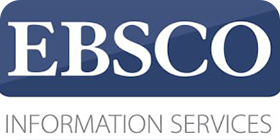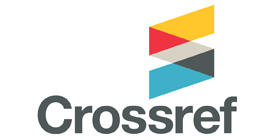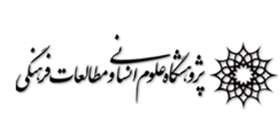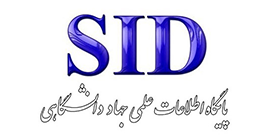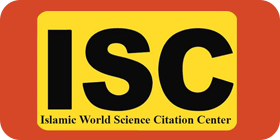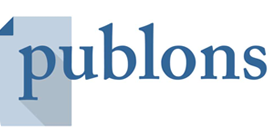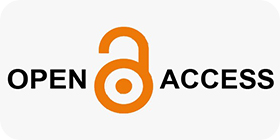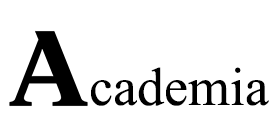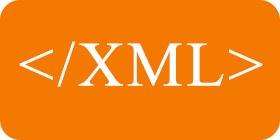Phenomenology of Children’s Reactions to G-Rated Animations and Its Educational Implications for Enhancing Moral Inquiry
Keywords:
Animation, Moral Inquiry, Phenomenology, Children’s Reactions, Educational Implications, G-Rated Films, Empathy, Moral DevelopmentAbstract
Purpose: This study aimed to phenomenologically explore children’s reactions to G-rated animations and extract their educational implications for producing children’s media content that promotes moral inquiry.
Methods and Materials: The research employed a qualitative phenomenological design with an interpretive and inductive approach. The study was developmental–applied in purpose and cross-sectional in timing. Participants included two groups: ten children aged six to nine years, selected through purposive sampling, and fifteen experts in education, psychology, and children’s art. Data were collected using observation and semi-structured interviews with children, followed by a focus group discussion with experts. Data analysis was conducted through Colaizzi’s seven-step phenomenological method and thematic analysis using MAXQDA software, enabling the identification of both children’s experiential meanings and experts’ educational inferences.
Findings: Children’s reactions revealed complex moral, emotional, and cognitive engagement with the animated content. Participants displayed empathy toward animated characters, moral reasoning about fairness and justice, and critical thinking regarding narrative outcomes. Their affective responses showed awareness of ethical dualities—good versus bad and acceptance versus prejudice. The phenomenological analysis identified central themes such as identity discovery, empathy, courage, acceptance of differences, friendship, emotional regulation, and environmental concern. Expert panel discussions emphasized the educational potential of animations to cultivate moral reasoning, critical inquiry, and social awareness in children when guided by reflective dialogue and pedagogical framing.
Conclusion: G-rated animations serve as effective moral and educational tools that facilitate children’s moral inquiry, empathy, and cognitive development through imaginative engagement. Integrating phenomenological insights into animation production and educational practice can strengthen children’s ethical understanding, emotional literacy, and reflective thinking.
Downloads
References
Al-Lahi, B. (2022). Strategies for coping with the cognitive harms of Walt Disney animations. Biannual Journal of Educational and Psychological Studies of Families, 3(6). https://www.noormags.ir/view/en/articlepage/2057866/
Beaino, T. (2021). The effects of cartoons on Lebanese children aged between 3 and 10 A Thesis presented to the Faculty of Humanities at Notre Dame University-Louaize, Spring]. https://ir.ndu.edu.lb:8443/xmlui/handle/123456789/1324
Dalia, M. M., Violet, F. I., & Nahla, S. A. (2021). The Effect of Animation on the Child's Language Development. Journal of Environmental Science, 50(3), 107-138. https://doi.org/10.21608/jes.2021.181770
Dehvari, S., Al-Lahi, Z., & Roshaniyan, R. M. (2023). The impact of using animations on the understanding of abstract concepts in experimental sciences and its effect on cognitive processing and depth of learning among sixth-grade students. Quarterly Journal of Psychological and Educational Studies, 9(2). https://www.noormags.ir/view/en/articlepage/2111929/
Ebrahimi-Tirtashi, M., Sadati-Rakavandi, M., & Sadati-Rakavandi, M. (2023). Inquiry-based teaching methods. Horizons of Humanities, 74(7), 7-15. https://www.noormags.ir/view/en/articlepage/2057866/
Faghadi, M., Mahmoudnia, A., Barkhordari, R., & Qaedi, Y. (2024). Philosophical explanation of dramaturgy as an educational approach in formal education: Examining roles and providing suggestions for improving the teacher training system. Quarterly Journal of Technology and Knowledge in Education, 4(11). https://www.noormags.ir/view/en/articlepage/2203407/
Fields, S. M. (2020). Animating Identity: Changing Representations of Gender, Race, and Class in Children's Animated Feature Films Since 1990 Doctoral dissertation, Wesleyan University]. https://digitalcollections.wesleyan.edu/_flysystem/fedora/2023-03/17142-Original%20File.pdf
Ghafari Qadir, J. (2023). Methods of conveying cultural and social concepts to children through animation from the perspective of experts (Case study: "Heroes" series). Quarterly Journal of Research in Islamic Education, 31(58). https://iej.ihu.ac.ir/article_208142.html?lang=fa
Ghoshi Rizi, A., Abdoli Sajazi, A., & Khorramdashti, M. R. (2023). The impact of animation on learning.
Hosseini, A. H., Podineh, F., & Azarbadgan, S. (2023). Investigating the impact of educational animations on the abstract thinking of elementary school students.
Kiarasi, S., & Babaei, M. (2022). Exploring lived experiences of hidden learning in the use of video games and animations (A phenomenological study). Quarterly Journal of Academic Management, 1(1). https://www.noormags.ir/view/en/articlepage/2010881/
Klinmalee, R. (2022). A Phenomenographic Study of Teaching and Learning Ability through Cartoon Movies Animation. Journal of Positive School Psychology, 3907-3916. https://search.ebscohost.com/login.aspx?direct=true&profile=ehost&scope=site&authtype=crawler&jrnl=27177564&AN=157809874&h=Ozq0tDt06wSMfQG6c02Gk1%2BKj12Ympsa%2B1aZWT0boLwvkG3pUODZNAxBnvTSaq%2BCstiyQ27Kb%2BbtyqAiGhERKA%3D%3D&crl=c
Leung, S. K., Wu, J., Li, J. W., Lam, Y., & Ng, O. L. (2025). Examining young children's computational thinking through animation art. Early Childhood Education Journal, 53(5). https://doi.org/10.1007/s10643-024-01694-w
Listiani, T., Nurhasanah, N., Hidayat, R., Septiana, T., Watin, W., Walihah, Z., & Susilawati, S. (2022). Development of Computer-Based Learning Media (Digital) Tutorial Model to Improve Physics Learning Process in the Pandemic Era (Covid-19). AMPLITUDO: Journal of Science and Technology Innovation, 1(1), 5-12. https://doi.org/10.56566/amplitudo.v1i1.2
Nasirian, H., & Paeini, Q. (2022). Animation and social challenges: The representation of the identity crisis in American society in the animation Zootopia.
Qasemi, F., Zandvaniyan, A., Rahimi, M., & Hosseini, H. (2023). An analysis of themes consistent and inconsistent with Iranian-Islamic culture in the most popular television animations for age group (J). Scientific Journal of Audiovisual Media, 17(48). https://javm.iribu.ac.ir/article_187670.html
Saba, P., Qi, H., Saleem, A., Chen, I. J., Kausar, F. N., & Iqbal, M. F. (2023). Effects of Animated Movies on the Aggression and Behavior Performance of Primary School Students and Their Control Using a Cognitive Behavioral Anger-Control Training (CBACT) Program. Behavioral Sciences, 13(8), 659. https://doi.org/10.3390/bs13080659
Saberi. (2023). Psychological assessment and analysis of modern myths in shaping children's personalities through animated characters (Spider-Man trilogy and The Last Story). Studies in Art and Culture, 26(8), 135-149. https://www.noormags.ir/view/en/articlepage/2019860/
Suchman, J. R. (1966). A model for the analysis of inquiry. In Analyses of concept learning (pp. 177-187). Academic Press. https://doi.org/10.1016/B978-1-4832-3127-3.50016-X
Tasviri, Z., & Atahri, Z. A.-S. (2021). An exploration of the educational implications of SpongeBob SquarePants from the perspective of negation and affirmation of the six domains of education. Cultural Research Quarterly, 14(2). https://www.jicr.ir/article_435.html
Tudeh Ranjbar, M., & Iraqi, F. (2022). The effects of animations on children. https://www.sid.ir/paper/1503818/fa
Downloads
Published
Submitted
Revised
Accepted
Issue
Section
License
Copyright (c) 2025 Fariba Gourkani (Author); Yahya Ghaedi; Afzalossadat Hoseini (Author)

This work is licensed under a Creative Commons Attribution-NonCommercial 4.0 International License.


